Boric acid in the ear is prescribed in the treatment of otitis media in adults and children. It quickly brings relief, warms and has an anti-inflammatory effect. But in some circumstances it can cause significant harm. Therefore, it should not be used without consulting an otolaryngologist.
Material Content:
Release form, composition and indications for the use of boric acid
The drug is available in the form of a powder and an alcohol solution. Crystalline white matter contains 100% active ingredient.
0.5 to 3% acid is added to the alcohol solution. The remaining volume is filled with 70% medical alcohol.

Liquid medicine is used in the form in which it is dispensed by pharmacies. The powder is used to prepare aqueous solutions immediately before the treatment procedure.
Boric acid destroys pathogens, inhibits fungi and lice.
Alcohol solution is prescribed for otitis media. They are cauterized by weeping eczema and are treated with dermatitis spots.
A powder is prepared for treating skin diseases and washing the eyes during conjunctivitis.
The use of boric acid is associated with a certain risk. Penetrating into the body through mucous membranes and wounds, it tends to accumulate after prolonged use in organs and tissues and have a toxic effect.
With extensive treatment of open wounds, fatal poisoning can occur.
Once in the bloodstream, the compound behaves relatively stably.After 12 hours, it begins to be excreted by the kidneys. The better the function of the paired organ is preserved, the faster the acid leaves the body and has less negative impact.
Through intact skin, it is not absorbed.
Boric acid in the ear: instructions for use
In the form of a powder, the agent is injected into the ear canal by insufflation (insufflation). The procedure is performed in the postoperative period to prevent infection of damaged tissues.
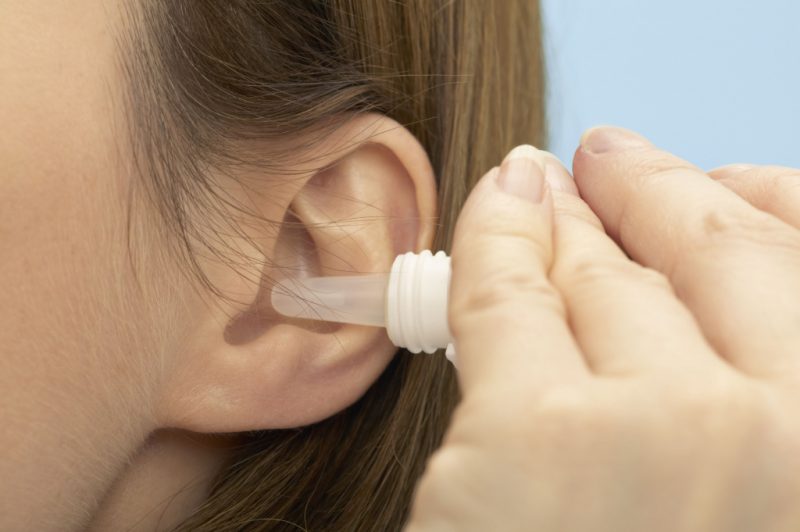
The crystalline powder is blown in by a special apparatus with an insufflator, which distributes the product over the entire inner surface. The procedure can only be performed by an experienced doctor in a hospital setting.
For adults
Before the introduction of the drug, you need to clean your ears from accumulations of sulfur. They do this with a cotton turunda or a bandage folded in a swab dipped in hydrogen peroxide.
To facilitate the procedure, drops of peroxide can be directly instilled into the ear canal. Hold for 10 seconds. Remove residues with dry cotton.
Alcoholic solution of boric acid is heated under hot water or in a water bath to body temperature. Check if he is too burning by dropping a little funds on his wrist.
After this, the adult must be laid on his side, with a sick ear to the top. Using a pipette, inject 3-5 drops of the drug into the ear canal. To distribute the solution most evenly, lie down in the same position for 10 minutes.
After the patient rises, part of the product may leak from the ear. It must be assembled, and the auditory canal covered with cotton turunda for one hour.
If necessary, the second ear is instilled in the same sequence.
For children
Children can have a similar procedure in two ways. Introduce 2 drops of the drug into the ear canal according to the described scenario. Or, without burying the medicine inside, moisten cotton wool with it and lay the ear canal for an hour.
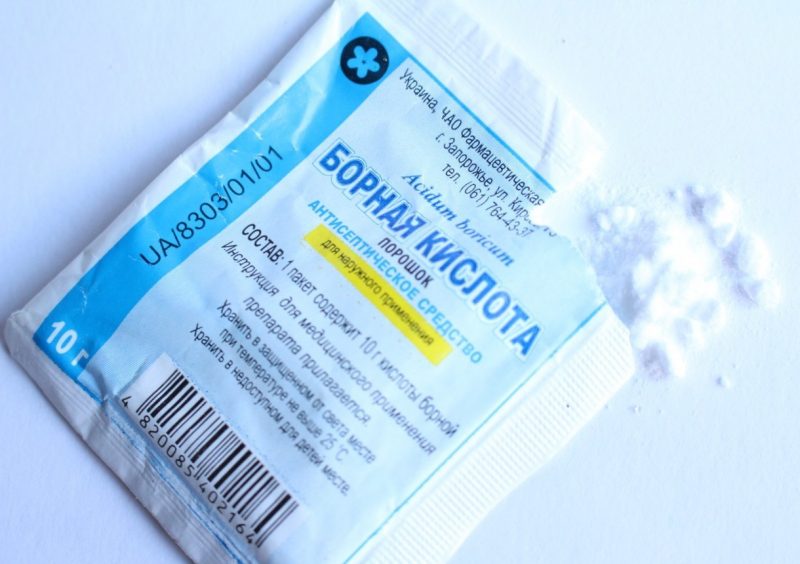
For children and adults, treatment is carried out from 3 to 5 times a day. Do not exceed the indicated dosages. Treatment lasts no more than a week. The term can be shortened on the recommendation of a doctor.
Can boric acid be dripped into a child’s ear?
Without an examination, the otolaryngologist should not do this. Since if the tissues inside are damaged, the medicine will be able to absorb and penetrate the blood.
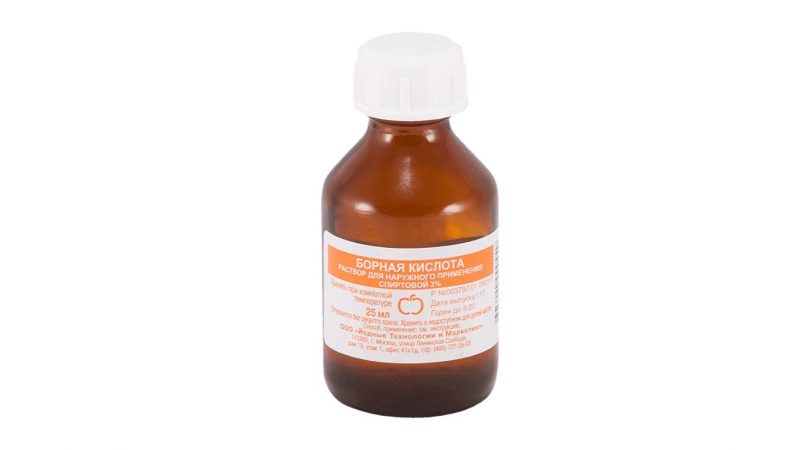
Boric acid for children is a certain danger. Due to the age of young patients, their renal function is almost always underdeveloped. Disposal of a toxic substance is slower and more difficult. During careless treatment, there is a greater likelihood of poisoning.
How to drip into the ear of adults and children?
A 3 percent boric acid solution for the ears is prescribed in the treatment of otitis media for both adults and children. It has the greatest therapeutic effect.
There is an unspoken prohibition not to self-medicate without a doctor's prescription. If it was not possible to be examined, it is better to introduce a moistened cotton wool into the ear. It is possible to bury a medicine in the ear canal if there is confidence in the absence of purulent processes.
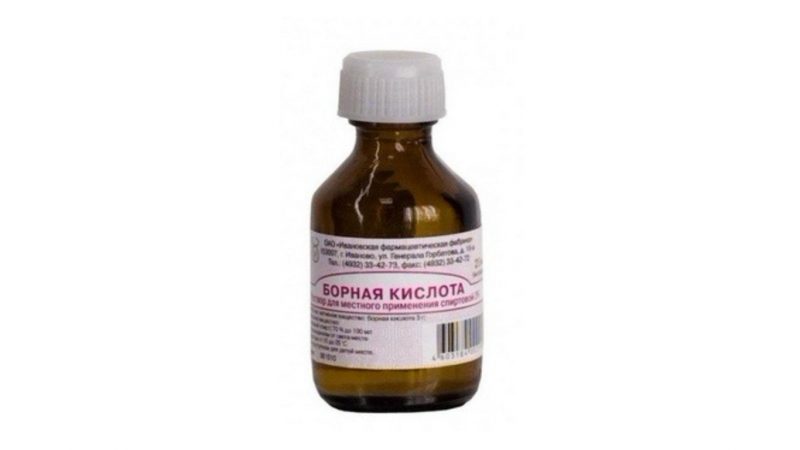
To maximize acid penetration into the ear:
- lay the patient on his side;
- pull the earlobe slightly with your free hand;
- Using your other hand, use a pipette to drop the amount of medicine prescribed by your doctor into the hole.
To prolong the effect at night, you can put turunda soaked in alcohol in your ear.
If, along with boric acid, the administration of other antibacterial drugs is prescribed, they should be used one hour after the main treatment.
Side effects and overdose
With a short-term prescription of the drug as an external agent, side effects are rare. Sometimes at the injection site there is an increase in temperature.
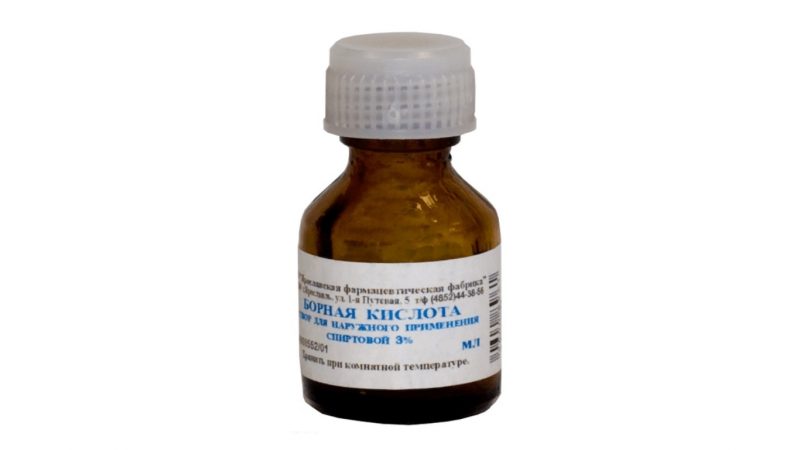
The penetration of acid into the bloodstream can be accompanied by nausea, diarrhea, headaches, confusion, peeling on the skin, pallor of the skin.
In case of an overdose, all the symptoms of intoxication appear: a condition accompanying poisoning, nausea, depression of consciousness, the development of shock or coma.
An acute condition is noted only with accidental ingestion of acid. Since the product is highly toxic, it should be kept away from children.
Contraindications
Before treating the ear with an alcoholic solution of boric acid, you need to make sure that there are no purulent processes in it. The introduction of acid is not allowed for otitis media, accompanied by secretions.
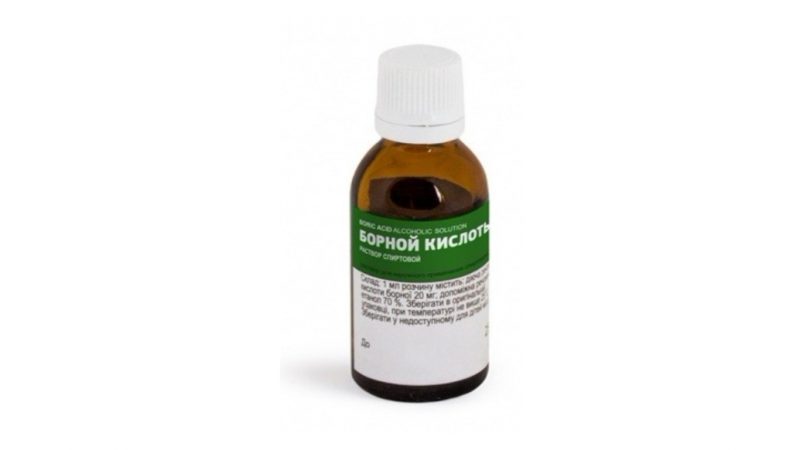
Contraindication is individual intolerance and the state of pregnancy. For children, the drug is prescribed from the second year of life.
Boric Acid Analogs
The modern analogue of boric acid is the Otipax drug, which has two active components: phenazone and lidocaine. They are not treating substances, but only relieve symptoms.
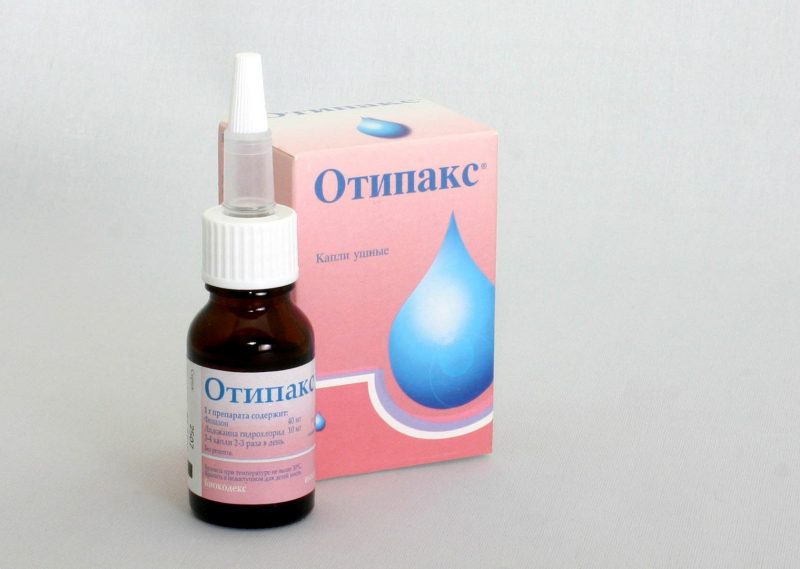
Lidocaine reduces sensitivity, disrupting the conduct of a pain signal. Phenazone blocks the synthesis of prostaglandins that cause inflammation, and has a local anesthetic effect.
The drug is not used in case of violation of the integrity of the eardrum and individual intolerance.
Adults are prescribed 3-5 drops up to 5 times a day for 10 days. For children, this drug is considered the least dangerous. It can be prescribed in an individual dosage depending on age, including with some forms of purulent otitis media, as well as in the post-traumatic period, after operations or removal of a foreign body.
The components of the drug do not have a systemic effect, since with local administration they are not absorbed and do not penetrate into the blood.
The drug "Polydex" has a similar effect. The combined remedy incorporates a broad-spectrum antibiotic neomycin and anti-inflammatory drugs. At the same time relieves pain and fights infection.

It is not absorbed into the bloodstream and is not dangerous when applied topically. May cause individual intolerance. It is not prescribed for violation of the integrity of the eardrum. Side effects are noted only in isolated cases.
It is prescribed for adults and children from 2.5 years old in the same dosage. Before processing the bottle should be warmed in hands. 1-2 drops 2-3 times a day are injected into each auditory passage. Sometimes an adult doctor may increase the dosage to 5 drops. Treatment lasts from 5 to 10 days.
Boric acid is an inexpensive, proven tool that has been used in otolaryngological practice for more than a dozen years. She has proven herself thanks to her quick and effective action. But when handling it, you need to remember precautions, avoid getting inside, and not exceed the treatment time. Remember that no drug should be prescribed on its own.
- Nastya












